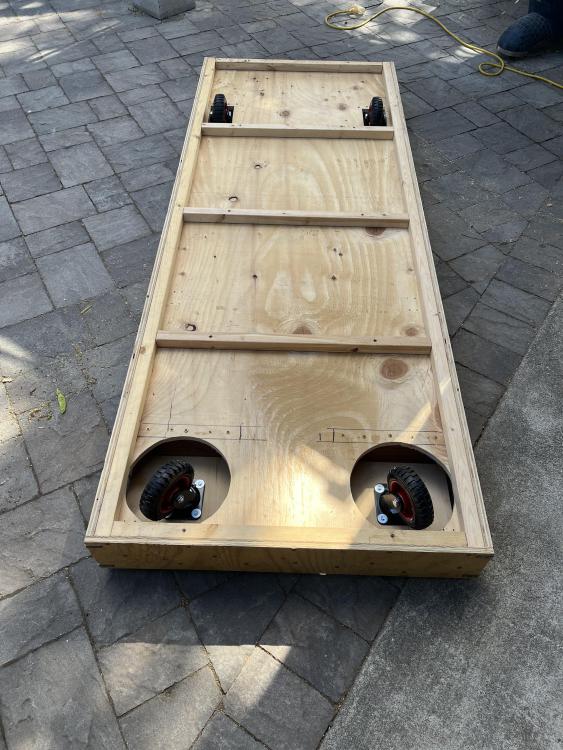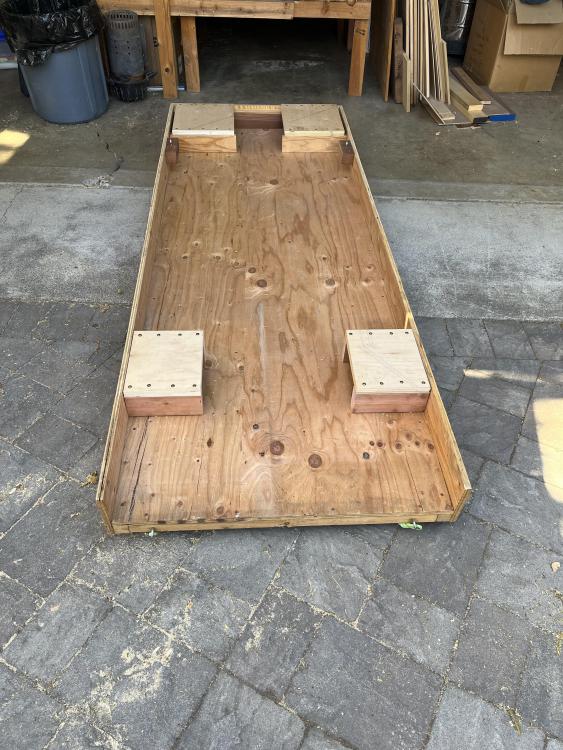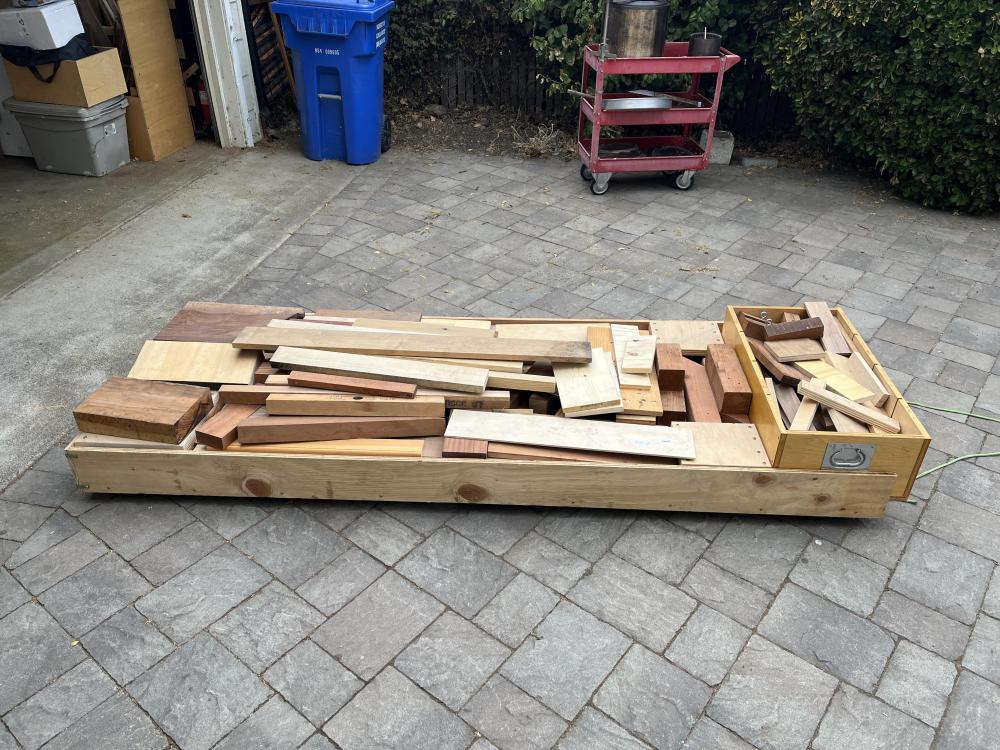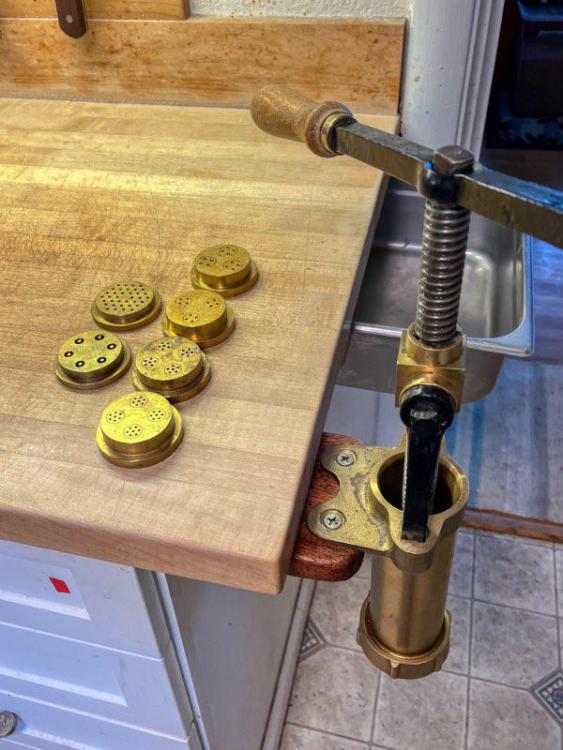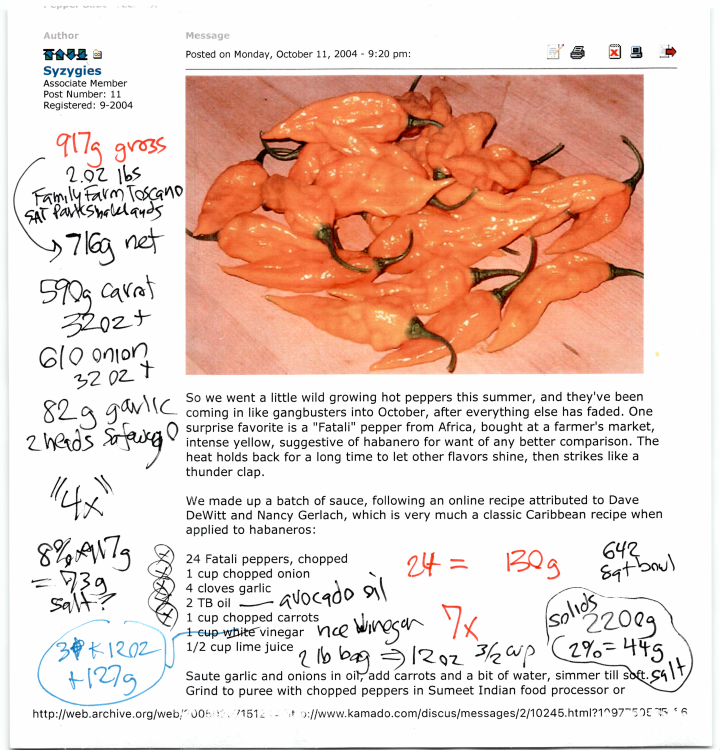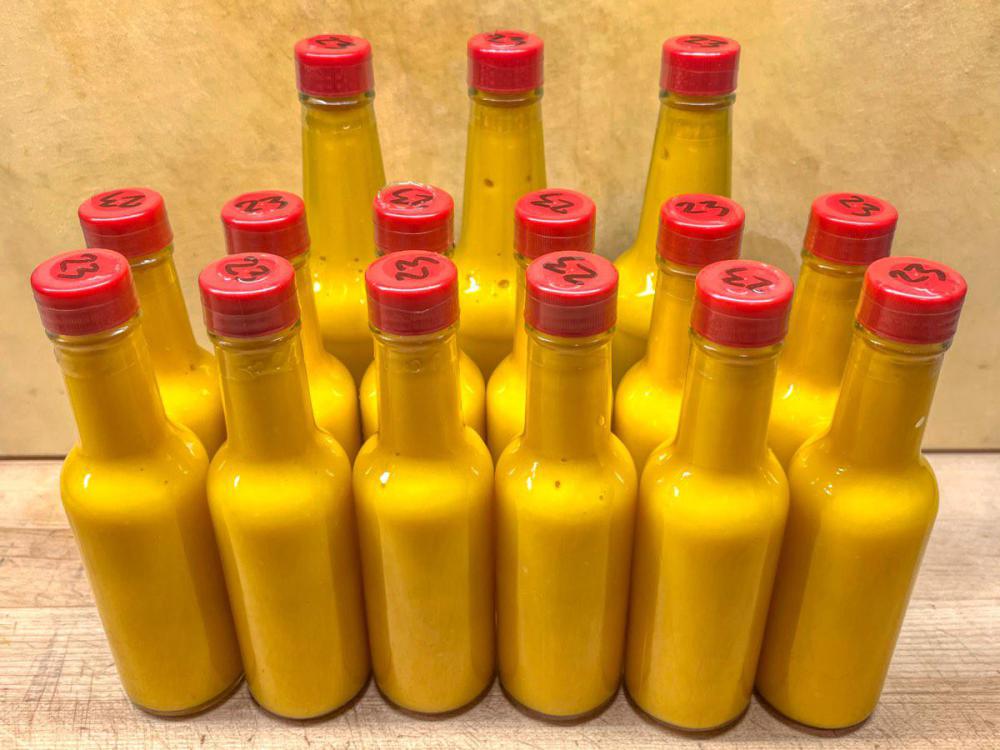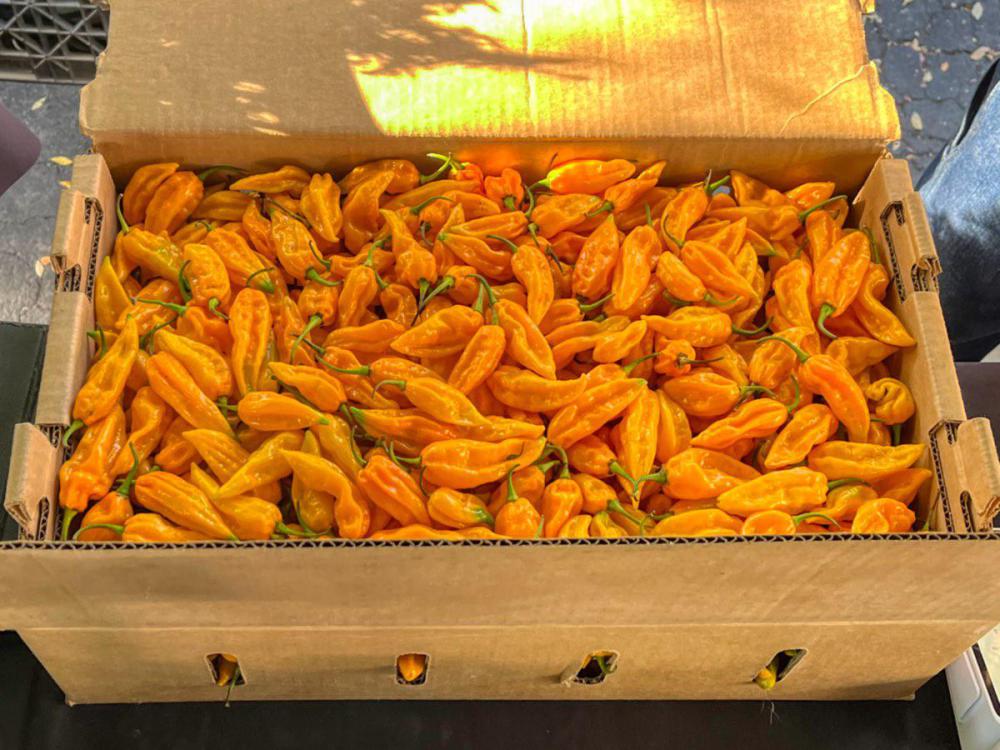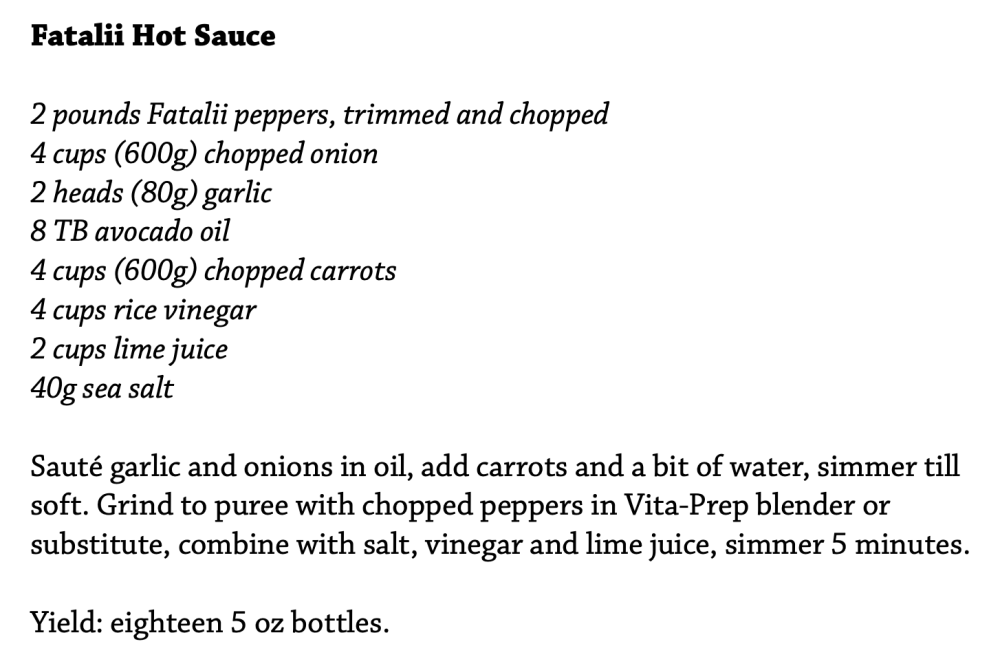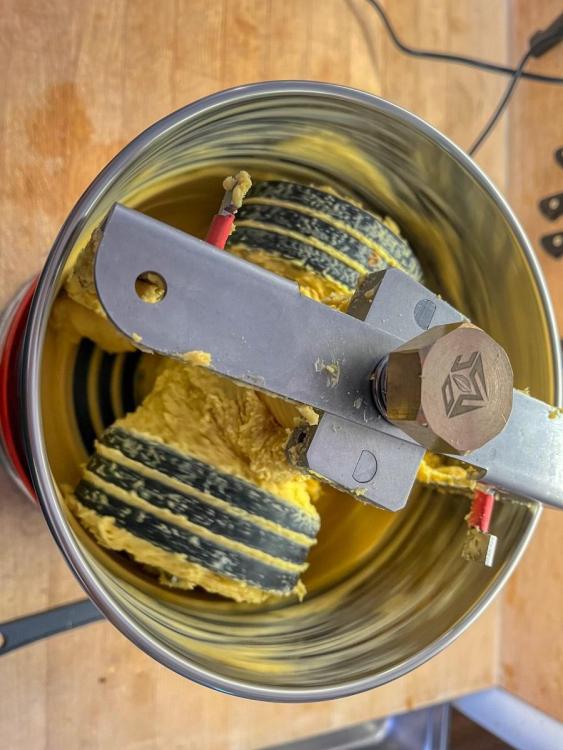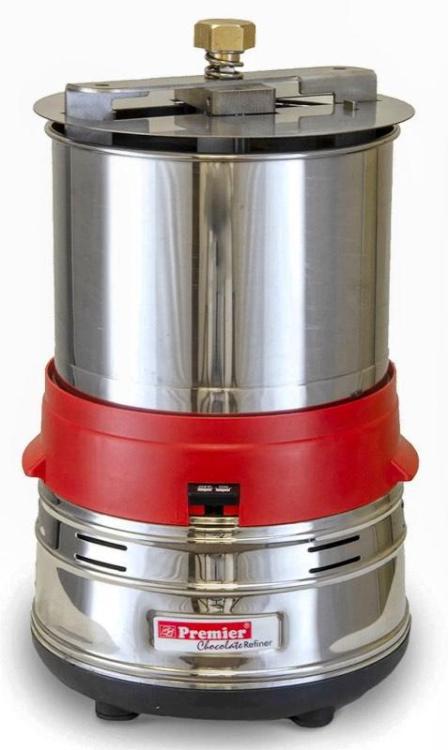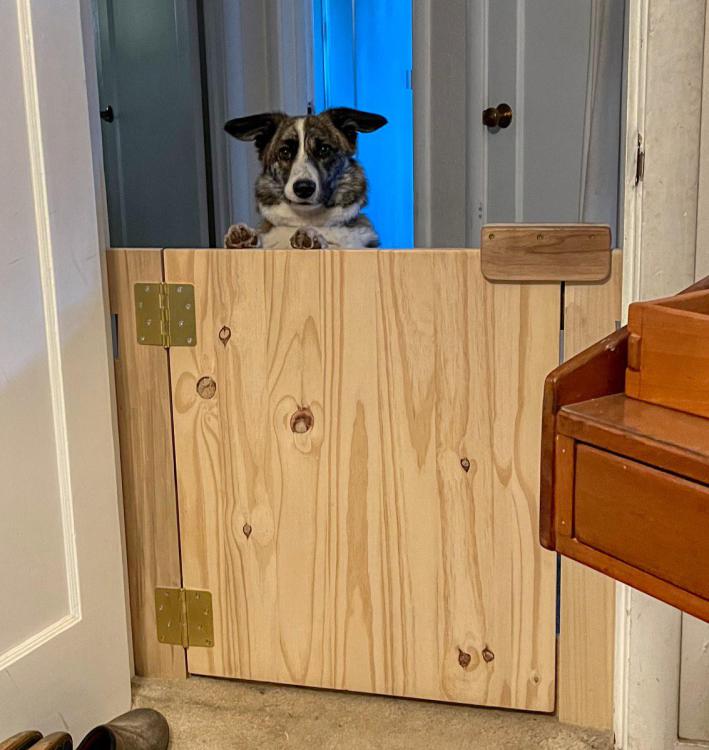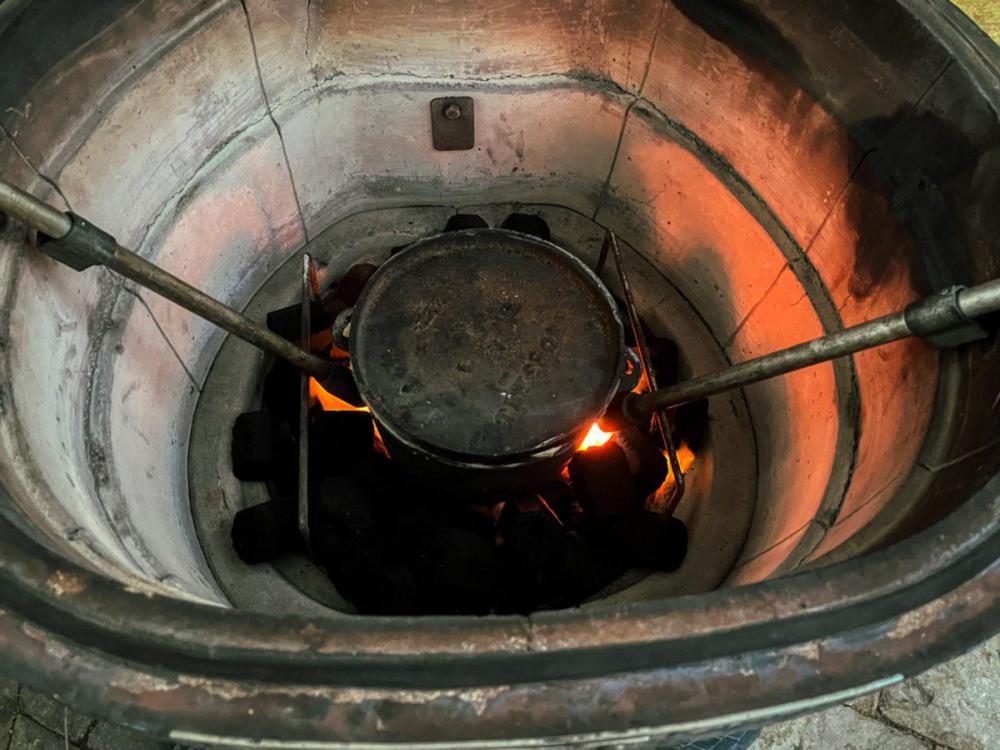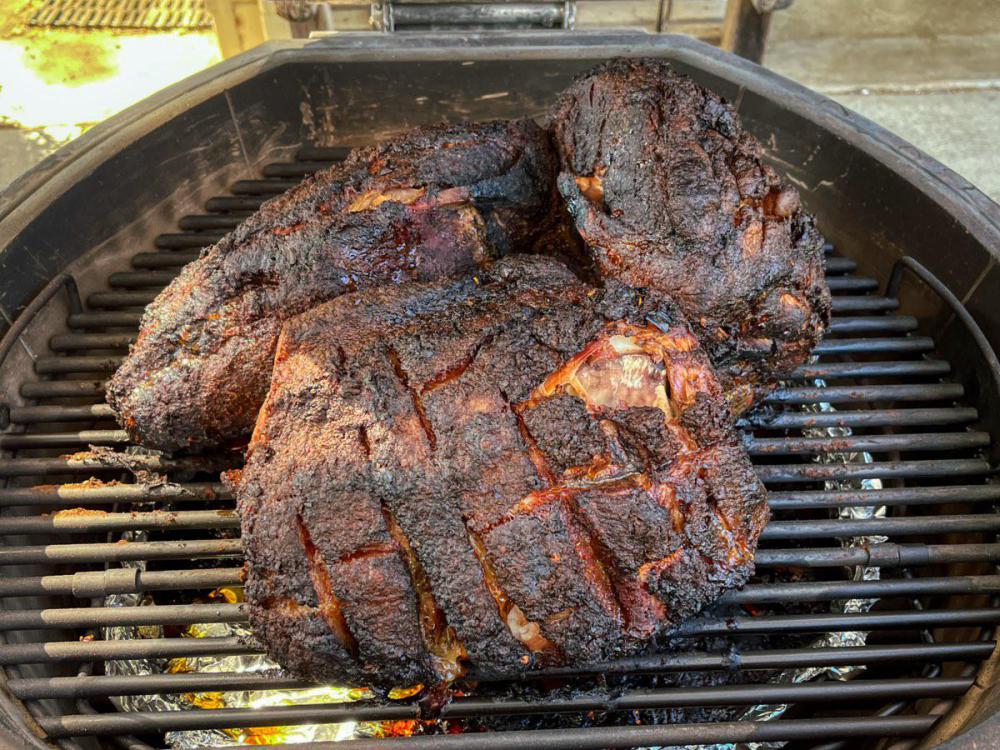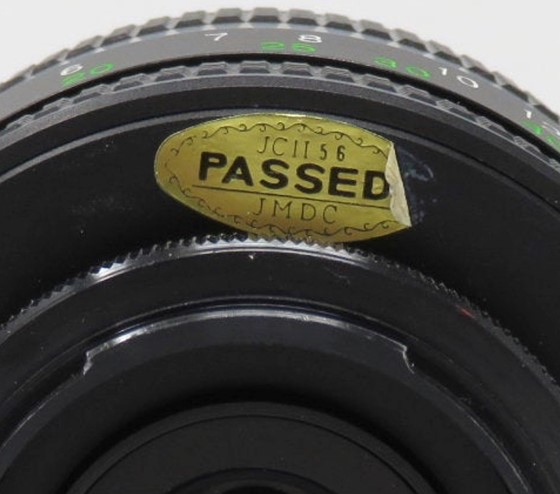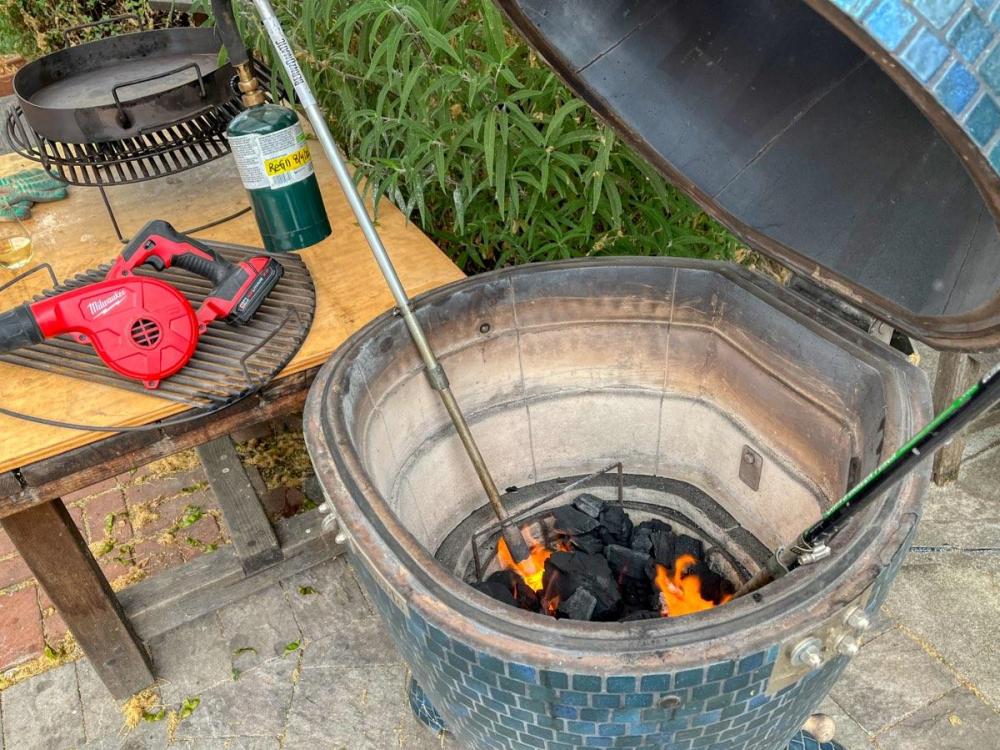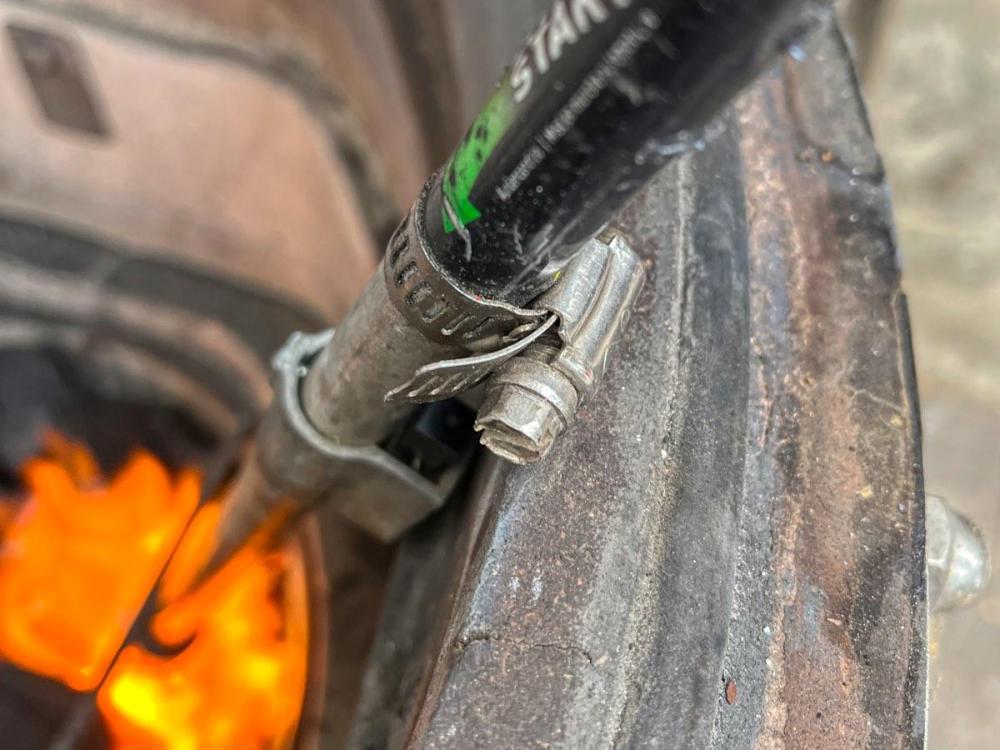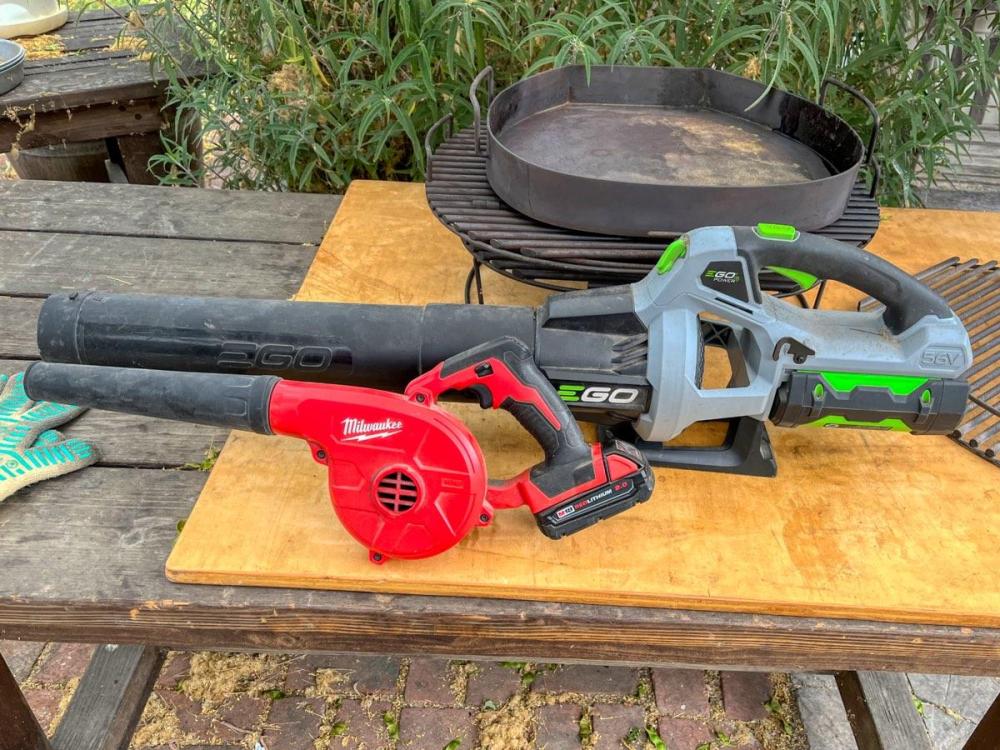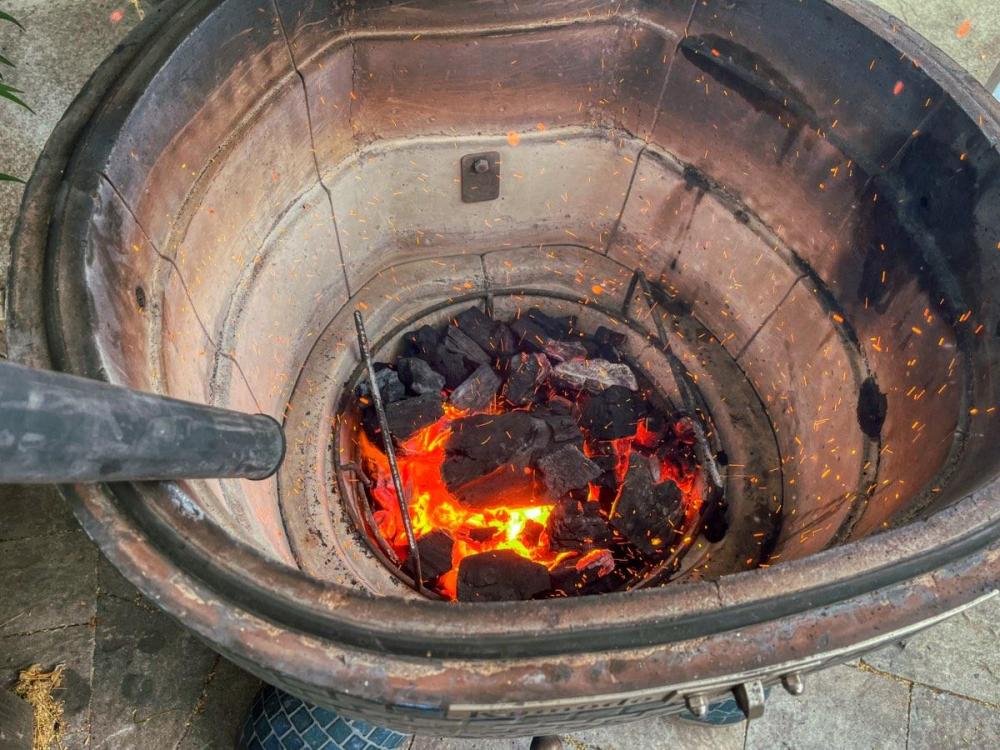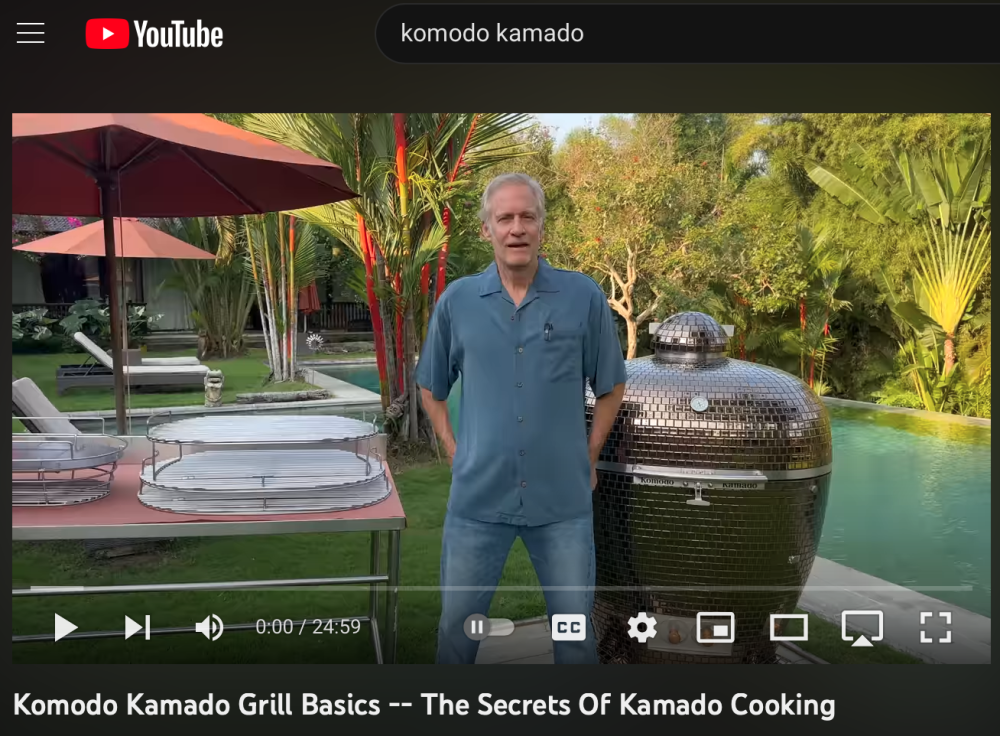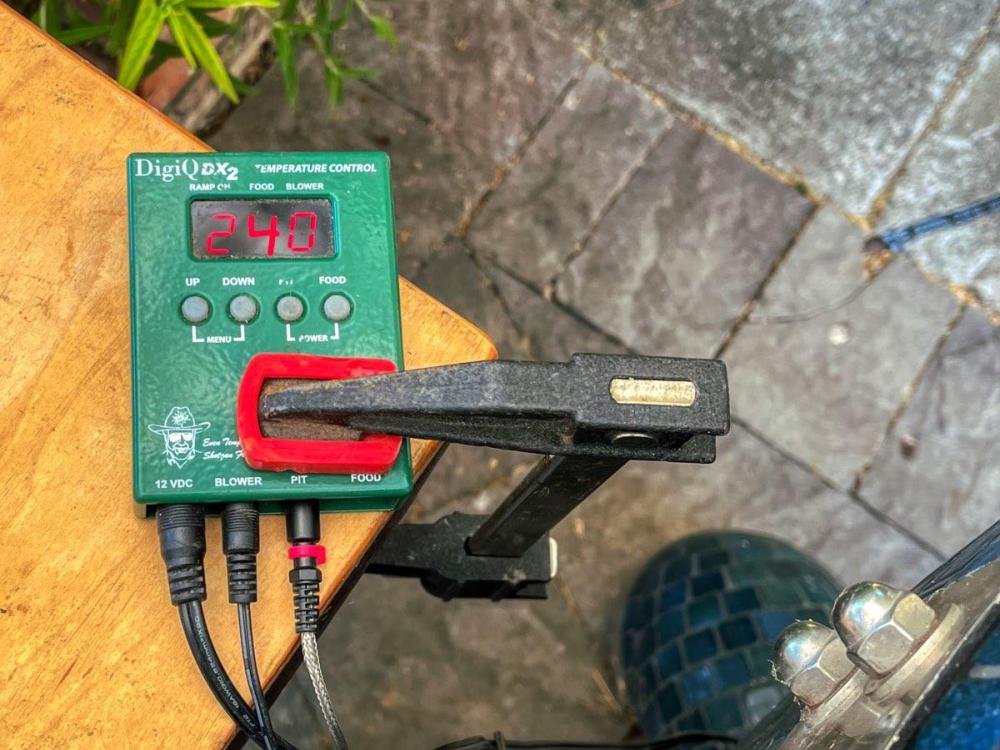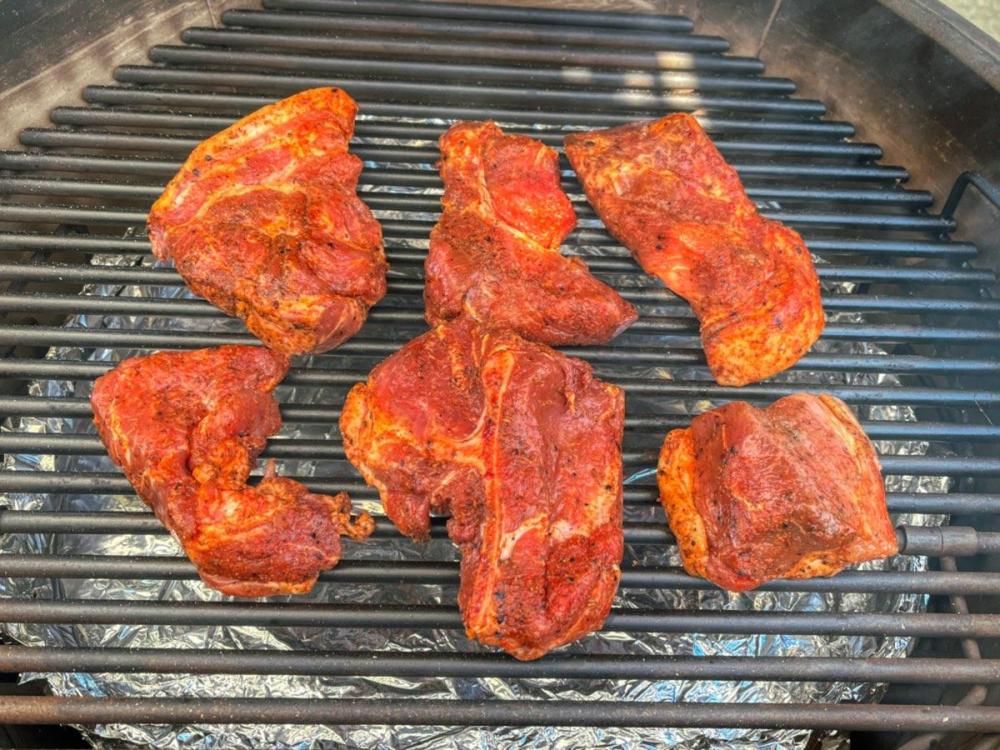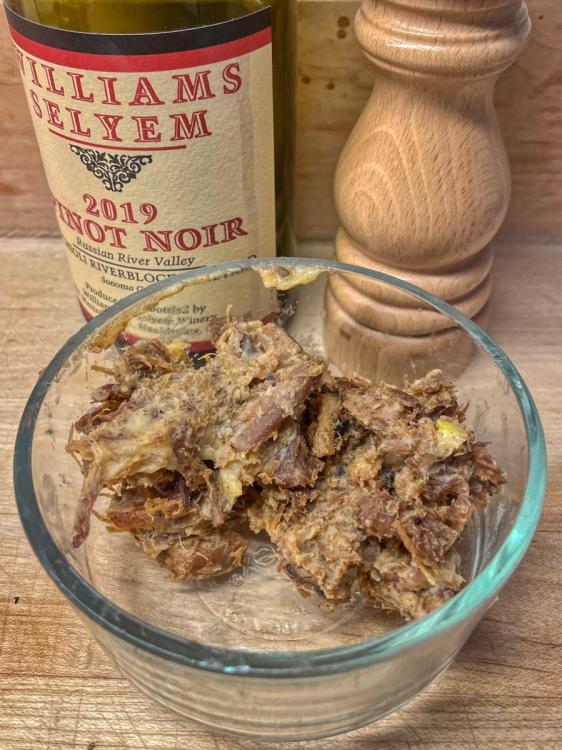-
Posts
1,739 -
Joined
-
Last visited
-
Days Won
53
Content Type
Profiles
Forums
Events
Everything posted by Syzygies
-

Nixtamal / masa / tacos from Masienda Oaxacan corn
Syzygies replied to Syzygies's topic in Techniques
That has to be it. For centuries, masa was stone ground "a mano" using a metate. Modern expediencies involve using powerful grinders, far more powerful than a food processor; Masienda sells a $1995 Molinito that does a credible job. However, I went to an acclaimed restaurant that let me tour their kitchen to see their Molinito, and my friends at table thought my tortillas were clearly better. One can see all sorts of possible confirmation biases here, such as a restaurant needing to "lean in" to an obviously artisanal style, for diners who can't discern "traditional but better" quality unassisted. Cutting isn't grinding. The best way I know to grind is using a Premier Chocolate Refiner, an upgraded version of advice by Bricia Lopez to use an Indian wet grinder. The process is tedious, less tedious with experience, but it produces fundamentally different results. The friend who introduced me to fresh masa now has the Vita-Prep commercial blender from my former New York apartment. Working too wet then mixing in masa harina, he still wasn't satisfied with the results. For this purpose a Vita-Prep is far more powerful than a Cuisinart (I have both). How one cuts matters. For a parallel problem, Serious Eats' The Best Way to Mince Garlic details the significance of different techniques. I'd say "not puffing" is a symptom, not the root issue. For a parallel problem, consider crema on an Italian espresso. People expect to see crema as a certificate of quality and correct technique, but it's actually easily manipulated detritus in the beans, independent of flavor. Here, based on experience, I'm not concerned that you can't puff but I'm profoundly suspicious of Cuisinart masa. -

Nixtamal / masa / tacos from Masienda Oaxacan corn
Syzygies replied to Syzygies's topic in Techniques
The first Rick Bayless method is how I've always rescued stale artisan bread, but I then want to toast the bread. He's good, but my younger attempts at learning to cook Mexican based on his books floundered. Diana Kennedy got me past restaurant Mex to regional surprises, and Bricia Lopez unlocked an ingredient one could do better than restaurants (tortillas from homemade masa), freeing various of us here to then improvise to our heart's content. I like his second method. I'd be tempted to instead set up a @PVPAUL pipeline, passing fresh tortillas through an actual steamer then do-like-Paul onto open flame briefly to restore some character, then into the warming basket. Despite my best efforts to free my New York apartment to the four winds (My second masa wet grinder in NY became Paul's second masa wet grinder, and you wouldn't believe the Mexican goodies freezer care package he sent us as thanks) there were many casualties, including a Brazilian soapstone pot. It was too small, and I've cracked others, but even cracked they would make phenomenal tortilla warmers for occasions like this, as they hold heat for hours. Sturdy clay would work well for shorter waits. -

Nixtamal / masa / tacos from Masienda Oaxacan corn
Syzygies replied to Syzygies's topic in Techniques
-

Nixtamal / masa / tacos from Masienda Oaxacan corn
Syzygies replied to Syzygies's topic in Techniques
Towels! You probably already have some. -

Nixtamal / masa / tacos from Masienda Oaxacan corn
Syzygies replied to Syzygies's topic in Techniques
In California we have many Mexican restaurants / grocery stores, and the bigger ones include tortilla factories on premises. There are two within ten minutes of my house. Tortillas are sold in bags of fifty, often still warm, and it's a common sight while waiting in line to see a Mexican leave with two to four bags. My next door neighbor (the master woodworker) throws parties this way. For his birthday some years back his family bought him an outdoor griddle, a cart with a propane tank, about the size of a typical gas grill, with instead a restaurant-style griddle on top. I hid this for them till his birthday, and borrowed it back to serve tacos for 50 at a wedding rehearsal dinner. (I made pork butt in the KK, and Rancho Gordo beans, and bought the tortillas, guacamole, chips, and salsas.) French fries are twice cooked. So are commercial tortillas. They are usable as sold warm in the bag, but everyone always heats them on a griddle for serving. Think "buy sliced bread, make toast." Our tortillas from homemade masa can be more substantial, but the same principles could apply. What one might overlook if one has never seen this: Commercial tortillas are grilled, and often served, in pairs. This of course wouldn't work for the first cook, which for us is usually the only cook, but it works for the second. This has the effect of grilling one surface of each tortilla while the inside surfaces of the pair steam each other. One flips the pair. One could reverse the pair to grill all surfaces or leave this alone, a matter of taste. For a party, the point here is one can do twice as many tortillas at once, grilling in pairs. For thin commercial tortillas, it is usually the case that one builds a taco leaving the pair alone. Why is a subject of debate, and it's largely custom, I'm not sure one can believe any single answer. One theory is that individual tortillas are fragile, but both tortillas in a pair are unlikely to split in the same location. A different theory is that one can then separate the two tortillas to make two tacos from one. I've tried this and they don't always separate that easily, suggesting a competing theory that the pair is to provide more food, and the vendor doesn't want to try separating them either. For us, if they're cooked sufficiently on pass one, they'll grill just fine in pairs and separate easily for serving. I press mine thick enough that one wouldn't want to use pairs to make tacos. So this is what I'd do for your party. You don't even really need a practice run if there isn't time; good judgment should keep you out of trouble, first try. -
Hoo boy, a question dear to my heart. After building dedicated shelves elsewhere for my extruded lump charcoal museum (I have each generation of "evil empire" and of Dennis charcoal) I built a sled for wood scraps, to slide into the space I'd freed up. My neighbor is a master woodworker, and I get great scraps. A wheel's a wheel, right? I could hardly move my first draft. There are specs for the weight a wheel can handle, and wheels move easily when they're way under max load. (What's amusing is like the online "sagulator" for sag calculations, there are online calculators to predict how much weight a screw can handle before pulling out. My wheel boxes are entirely held in place by screws resisting being pulled straight out, and this design is generously overbuilt.) I can move this sled fully loaded with my big toe. Wheel size and construction matters.
-
I'm back to playing with my bigolaro for Italian pasta. (Past experiments have been mostly Asian, such as fermented rice noodles for Thai Kanom Jeen Nahmyah Bpak Dtai, or alkaline noodles for ramen.) There's a narrow dough hydration window, dry enough to extrude yet wet enough to knead. Kneading helps develop gluten, if possible. I'm well on the way to breaking my Atlas 150 pasta maker, as I've long wanted to do in order to justify an upgrade. Dough for extruding can be that stiff. Looking at upgrades, I saw hand cranked dough sheeters aimed at pasta. David: Would a truly stiff dough break your machine?
-
After years wondering if I'd ever find fatalii peppers again, I stumbled on the mother lode at a new participant in my local farmers market. New batch of my favorite Caribbean hot sauce recipe. Garlic, onions, carrots, lime juice, rice vinegar, and more chile heat than many people can handle. Think habanero, only more heat and a more complex flavor.
-

Nixtamal / masa / tacos from Masienda Oaxacan corn
Syzygies replied to Syzygies's topic in Techniques
Oh, he's ahead of all of us. This will be his second masa grinder! -

Nixtamal / masa / tacos from Masienda Oaxacan corn
Syzygies replied to Syzygies's topic in Techniques
I'm emptying my New York apartment so I can retire to California. I have the standard version of this grinder in New York, upgraded with chocolatier hardware to the equivalent of my preferred model in California. This thread gives a good idea as to how one would use this to grind masa. Does anyone want it? It's yours for the shipping from New York. I'm retiring so I can spend more time with this Corgi / Border Collie lovable monster. -
I'm credited with devising the smoke pot. I see it as a matter of personal choice, though my advice would be if you want to make sure it's your choice, don't let your spouse taste the results till you've made up your mind. I must always use a smoke pot if I want to stay married. A nice neutral analogy would be garlic presses. Carefully mincing garlic with a really sharp knife yields tiny undisturbed bits. The Joseph Joseph Garlic Rocker is a wonderful tool that quickly minces garlic with less damage than a garlic press. The MÄNNKITCHEN garlic press (makers of my favorite pepper grinder) is awesome but mashes the garlic. A microplane, more so. The Toiro Kitchen Suribachi Set is the best set of suribachis I've ever laid hands on, and purees garlic. So what's the difference? Serious Eats makes a careful analysis of the chemistry here: Disturbing garlic creates a chemical reaction that makes garlic more aggressive. I view this as a choice, day by day, like which sherry to cook with. Others have strong opinions. Same with smoking wood. When wood is allowed to burn, it creates more aggressive flavors. A smoke pot keeps the wood from actually burning. Use more wood, but get a more refined flavor, none of the creosote that open flames can create. Various of us on the commercial barbecue trail have had our hearts repeatedly broken. This can lead to an obsession with unmistakable smoke. I prefer to use smoke as a spice, but not the only spice, it needs to blend in with the rub and the meat. Speaking of "only spice", in college I bought "pumpkin pie spice" so I could make my Mom's pumpkin bread recipe. The women in my dorm staged an intervention, gently letting me know that one could buy the individual spices. While I now make pilgrimages to Kalustyan's, at the time I was horrified. "Have you seen what those spices cost? That's a semester's pot!" Which is another good analogy: Smoking a joint is a different experience from using a vaporizer, and reasonable people differ on which provides a better flavor experience. If you know which way you lean on that question, I've got a good guess which way you'll lean on a smoke pot. As the first photo reveals, getting a smoke pot going takes some practice. I like to light the charcoal under the pot while I heat the pot, with a pair of weed burners positioned using hose clamps. (This pork butt was for an "intimate" wedding rehearsal dinner for my stepdaughter.)
-
A penguin and a mechanic
-
Then you're fine. It can be hard to tell with a pan or rack bought years ago whether it was meant for oven temps. One shouldn't put random metal in a fire; galvanized was an example not an accusation. You asked about possible concerns and I answered.
-
I routinely shop at restaurant supply stores for this sort of thing. Not all wire racks are intended to be used in an oven. A further complication for barbecue is the uneven heat distribution from intense radiant heat. Ideally, find stainless steel oven-safe pans and wire racks. The real risk is in the other direction, as one improvises barbecue equipment: Galvanized metal offgases toxins when heated sufficiently. As a rule, one should always be keenly aware, stepping outside long-tested traditions. True intelligence is knowing what one doesn't know. The poster stiffs for this would be Alaskans who defied an ancestral tradition of fermenting in seal skins, because Homer buckets from Home Depot were so readily available. Some of them died of botulism. I'm now fermenting by vacuum packing my chiles with a starter. Do I test pH? You betcha!
-
I managed to disassemble and reassemble without directions; I recall it was tricky. Believing it is meant to come apart is half the battle. Only once it is apart does one see how everything fits together. My favorite version of this: Thirty years ago I had a Pelican fountain pen, and unscrewing it to add ink I accidentally took it apart further than intended. I was stumped for part of an hour how it went back together, till I made the assumption that it was supposed to be reassembled "wrong" in a way that made the ink reservoir a third smaller. It went together in seconds. I decided to "fix" it, but I wanted a spare of the part I was about to possibly demolish. I called a dozen pen shops around the country (how did one even learn who to call before the internet?). I finally called Fahrney's Pens in Washington D.C., and was put on hold, then their repair guru they normally protect from the public answered: "You won't figure it out. It took me three weeks to make the tool. Just send your pen to me!" She hadn't even been able to convice Pelican there was a problem. She routinely "upgraded" any Pelican pen she worked on, but I was the first person in the known universe that had noticed this issue, besides her. We were ecstatic to talk with each other.
-
There's a classic book from the early days of aviation that all pilots read: Fate is the Hunter The author was on a final flight before a long-awaited fishing vacation. The plane was making awful noises. He finally crawled into a wing cavity to explore, telling his copilot to do nothing. He then ignored the issue, and flew cautiously to a safe landing. There was a welcoming party. The other two planes of his type, same service history, had crashed while he was airborne. A long investigation concluded that the only way to avoid crashing was to do nothing. He took this as an omen, and retired. I believe that you're oversteering. Perhaps you're also starting with too much fire; always light just enough charcoal to pass command to the temp controller. See how close to sealed you can close the upper damper without putting your fire out. Partially close the valve on the bellows, if necessary. Wait twenty minutes between reactions. I like to file things into psychological categories. Controlling a fire, like some but not all cooking tasks, gets better when one stops "caring so much". I tend to place my controller temperature probe through the top lid hole that normally holds the analog thermometer, with an alligator clip (roach clip) as stop. This can read cold at first, and hot later, but I've had better luck controlling fires this way than with the standard advice to position the probe an inch away from the meat. It eventually doesn't matter; for low & slow the entire cooker converges on the same temperature, after this initial imbalance.
-
I came to KK from a POSK which dropped all its tiles. I liked my repair, I gifted it to my neighbor, but it "disassembled" when he then tried to gift it to our gardener. The Kamado Fraud Forum featured my POSK then took it down out of misguided "respect" for my feelings. I was proud of that repair. I figured I knew how to cook ceramic. Aside from all the superlatives that a KK is simply the best, it was a bit like learning to land a jet after flying Cesna prop planes. One learns, and it's all for the good, but don't kid yourself. Moving to something that "just works" is always an adjustment. On a parallel note, there's this idea in the tool world that one earns the right to the best tools. I disagree. An expert can make any tool work. A beginner really benefits from the best tools they can find, particularly in woodworking. For ceramic cookers, one "earns" the right to the best tool if one can come up with the scratch. End of story. No regrets.
-
I used to use chimneys, dating to before my ceramic cooker days. I'd buy a basic one and remove both the handle and the inside floor, so it was basically a cylinder with holes. I'd set it down on the charcoal grates, add paper and/or wax starters then charcoal, and light it in place. When the fire had developed I'd lift up with channel lock plyers, freeing the charcoal. The two advantages of a chimney are restricted airflow and additional height. Dennis is clear that our fireboxes are designed to restrict airflow (focus airflow on the charcoal) without help. I like to "design" my fire, so I want to set the charcoal in place before lighting it. This is crucial lighting extruded lump under a smoke pot for low & slow, and a mere personality quirk for hot fires. Pouring the chimney jumbles the fire. Lifting it out with channel lock plyers is less disruptive. Nevertheless, I had to adopt the weed burner approach for low & slow fires, and somehow they took over for everything (with the gas burner assembly being an experimental alternative). I don't know what happened to my modified chimney.
-
My overall favorite way is a pair of propane weed burners. I put hose clamps where I want the necks to rest on the KK edge, and trap the heads in the charcoal basket handles. This is especially effective for lighting the charcoal underneath a cast iron smoke pot. I have the gas burner assembly, despite fairly universal advice that this is a poor idea. The trouble is that it lights from the bottom, leading to an intense fire that burns out too quickly. Fogo for example sells giant lump as one option; big pieces work well e.g. for pizza (tonight's menu). I'm a huge fan of 99% isopropyl alcohol; I buy it in gallon jugs. That's routinely how I light a Solo Stove for quick grilling e.g. of salsa vegetables: A few wood chunks, more lump charcoal, pour on too much iso (oops) and light with a long match. Enjoy the sonic boom as the area birds decide to migrate! However one lights a fire, it needs oxygen more than additional flame, once it has started. Dennis used to use a hairdryer. I've convinced him and others to switch to a battery-powered leaf blower. The Ego leaf blower is too powerful for this application. If one already has joined the Milkwaukee battery cinematic universe, the Milwaukee leaf blower is perfect for fires, though anemic for other uses.
-
Komodo Kamado Grill Basics -- The Secrets Of Kamado Cooking (As Dennis shared in the KK forum thread KK Videos)
-

Less than Good News.. Rotator Cuff Surgery..
Syzygies replied to DennisLinkletter's topic in KK Announcements
Take good care of yourself in recovery! You'll need a good story to tell people. Like, you were visiting an elephant preserve, and the vets offered to let you try ... -
-
Looks like a K5, not a K7, to me. A buddy bought a K5 when I bought a K7. Mine dissolved into the ground; his still (sort of works). A KK is worth the money. Anything of similar appearance to this K5, new in a hardware or box store, is a better value than this K5.
-
Taco party yesterday. We make too much food, and it all went. This is what was left of carnitas from two kilos of pork butt. Carnitas is typically a stovetop pork butt braise. However, it just felt wrong not involving the KK and smoke somehow, and one of my guests always want ribs. This could have been the best version I've ever made; I started by smoking 1 1/2" slices for several hours in a cazuela, using apple wood in a one quart smoke pot. The meat was easily trimmed of excess fat at this point, and the cazuela drippings replaced the recipe lard. Proceed as normal from here, stovetop recipe.






